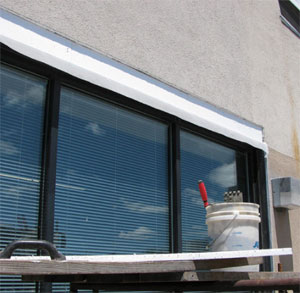Water, snow, air – it all can seep into windows and cause destruction, especially in older, landmark buildings. Sealing may be the go to solution, but often the real answer lies in window flashing. Learn how window flashing works and whether it’s the answer to your building’s aluminum window waterproofing needs.
Understanding Flashing
Flashing is a thin strip that stops water penetration via the angles common near windows. Some builders think siding or standard facades can perform this function, but that’s simply not true. Flashing materials include:
- Tape
- Sheet metal
- Vinyl
We know what flashing is, but when do you need it?
When There’s Mold
Rot and mold near a window is a telltale sign of water leaking and a clue that flashing can help. This is especially common for older buildings where caulk was used instead of flashing. Ignoring this can allow mold and rot to worsen and become a more costly problem.
When Windows Lack Channels
Some types of windows designed with built-in channels don’t need flashing. Those let water channel out and away from your building rather than seeping in. If your windows don’t have this built in, flashing is a good option.
Flashing is a best practice in aluminum window waterproofing, and some codes even require it. But if your building is older, it may not have it. If you’re facing mold, leaks and other signs of weather infiltration, call a window refinishing contractor to see if flashing installation can help.

